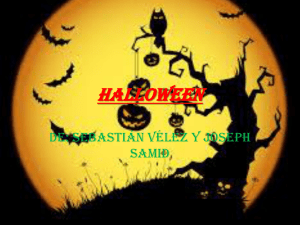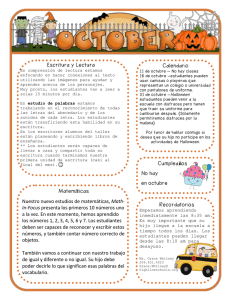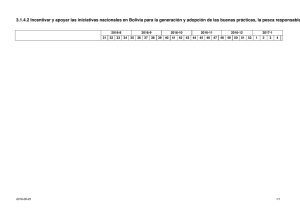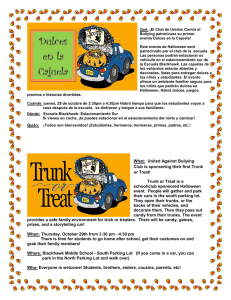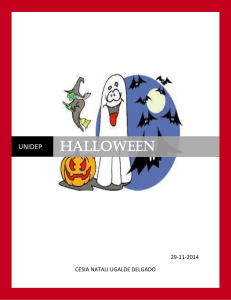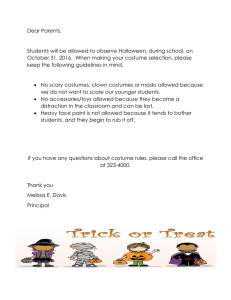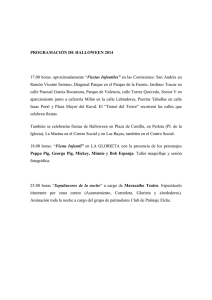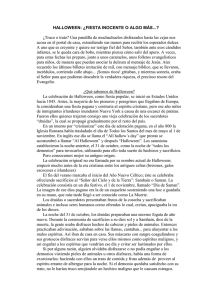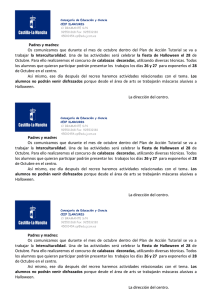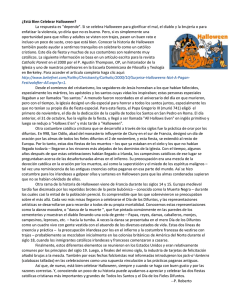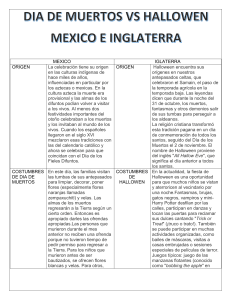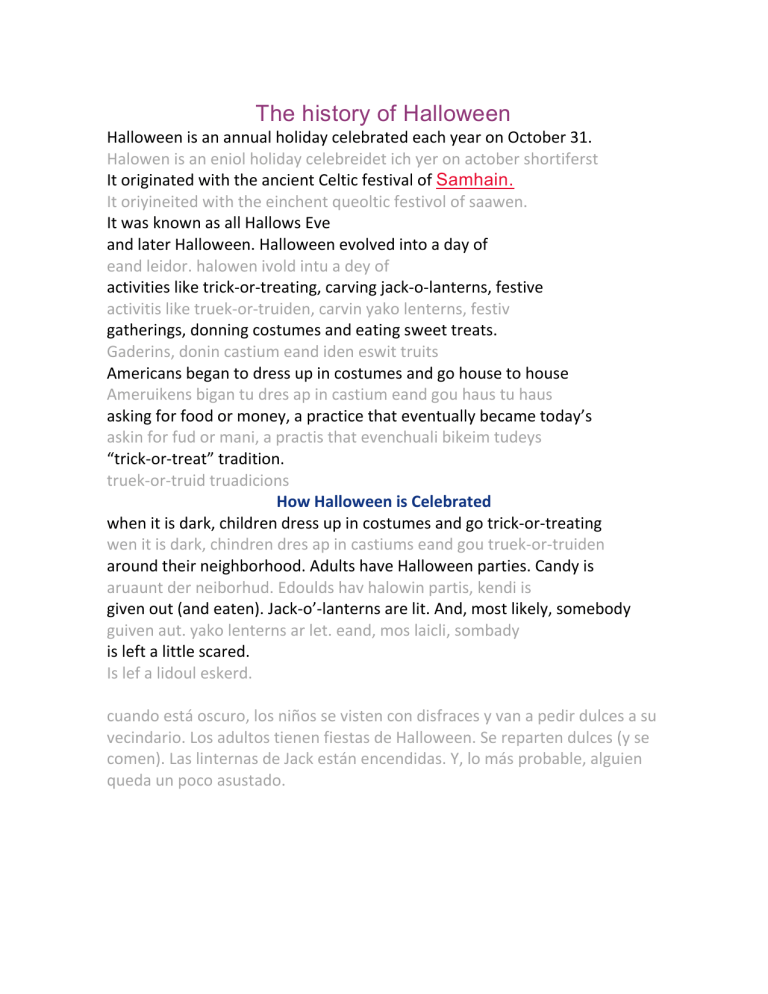
The history of Halloween Halloween is an annual holiday celebrated each year on October 31. Halowen is an eniol holiday celebreidet ich yer on actober shortiferst It originated with the ancient Celtic festival of Samhain. It oriyineited with the einchent queoltic festivol of saawen. It was known as all Hallows Eve and later Halloween. Halloween evolved into a day of eand leidor. halowen ivold intu a dey of activities like trick-or-treating, carving jack-o-lanterns, festive activitis like truek-or-truiden, carvin yako lenterns, festiv gatherings, donning costumes and eating sweet treats. Gaderins, donin castium eand iden eswit truits Americans began to dress up in costumes and go house to house Ameruikens bigan tu dres ap in castium eand gou haus tu haus asking for food or money, a practice that eventually became today’s askin for fud or mani, a practis that evenchuali bikeim tudeys “trick-or-treat” tradition. truek-or-truid truadicions How Halloween is Celebrated when it is dark, children dress up in costumes and go trick-or-treating wen it is dark, chindren dres ap in castiums eand gou truek-or-truiden around their neighborhood. Adults have Halloween parties. Candy is aruaunt der neiborhud. Edoulds hav halowin partis, kendi is given out (and eaten). Jack-o’-lanterns are lit. And, most likely, somebody guiven aut. yako lenterns ar let. eand, mos laicli, sombady is left a little scared. Is lef a lidoul eskerd. cuando está oscuro, los niños se visten con disfraces y van a pedir dulces a su vecindario. Los adultos tienen fiestas de Halloween. Se reparten dulces (y se comen). Las linternas de Jack están encendidas. Y, lo más probable, alguien queda un poco asustado. Day of the Dead in Bolivia Day of the Dead is a big holiday in Bolivia. It is celebrated over two days, on November 1st and 2nd. During the Day of the Dead in Bolivia, people believe that the souls of the dead come back as spirits to visit their homes for twenty-four hours, people prepare their family’s tombs in the local cemetery families clean the graves, place fresh flowers, and they even plant various plants or trees around the tombstones Offering Tables At Home Once the tombs are prepared at the cemetery, most Bolivians prepare a small offering table in their homes for the souls of their departed loved ones to enjoy. Bolivians put foods and drinks on the table that the deceased particularly liked, as well as a variety of drinks, cakes, cookies. Dia de los muertos en Bolivia El Día de Muertos es una gran fiesta en Bolivia. Se celebra durante dos días, el 1 y 2 de noviembre. Durante el Día de los Muertos en Bolivia, la gente cree que las almas de los muertos regresan como espíritus para visitar sus hogares durante veinticuatro horas, la gente prepara las tumbas de sus familias en el cementerio local las familias limpian las tumbas, colocan flores frescas e incluso plantan varias plantas o árboles alrededor de las lápidas Ofrecer mesas en casa Una vez que las tumbas están preparadas en el cementerio, la mayoría de los bolivianos preparan una pequeña mesa de ofrendas en sus hogares para que las almas de sus seres queridos fallecidos puedan disfrutar. Los bolivianos ponen alimentos y bebidas en la mesa que gustaron especialmente al difunto, así como una variedad de bebidas, pasteles y galletas.
